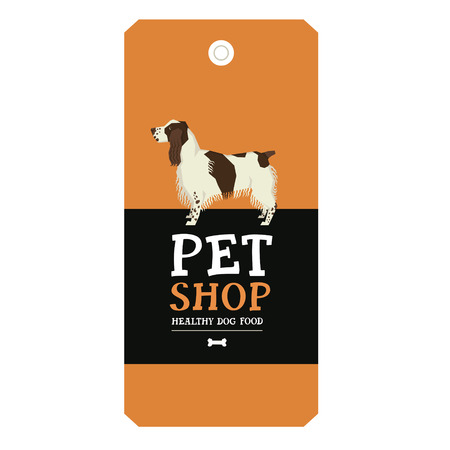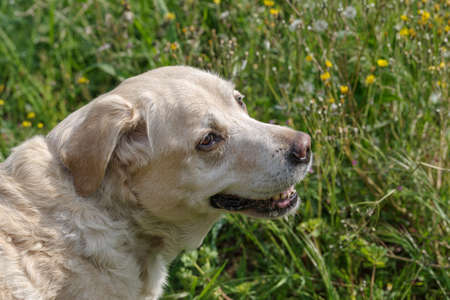1. Understanding Your Pet’s Nutritional Needs at Different Life Stages
Just like humans, pets have different dietary needs as they grow and age. A puppy’s energetic body requires a nutrient-rich diet to support rapid growth, while an adult pet needs balanced nutrition to maintain optimal health. As pets enter their senior years, their metabolism slows down, and they may require specialized diets to support joint health and digestion.
Puppy Nutrition: Building a Strong Foundation
Puppies grow rapidly in their first year of life, which means they need food rich in protein, healthy fats, and essential vitamins. Their diet should support bone development, brain function, and immune system strength.
Key Nutrients for Puppies
- High-quality protein: Supports muscle development and overall growth.
- DHA (a type of Omega-3): Essential for brain and vision development.
- Calcium & Phosphorus: Helps in strong bone formation.
- Easily digestible carbohydrates: Provides energy for their active lifestyle.
Adult Pet Nutrition: Maintaining Health and Energy
Once your pet reaches adulthood, their nutritional focus shifts from growth to maintenance. They require a well-balanced diet that supports their activity level without leading to weight gain.
Nutritional Requirements for Adult Pets
- Moderate protein levels: Helps maintain muscle mass without unnecessary strain on the kidneys.
- Healthy fats: Supports skin health and coat shine.
- Adequate fiber: Aids digestion and prevents constipation.
- Essential vitamins & minerals: Keeps the immune system strong.
Senior Pet Nutrition: Supporting Aging Bodies
Aging pets experience changes in metabolism, joint health, and digestion. Adjusting their diet can help them stay comfortable and healthy as they age.
Nutritional Needs for Senior Pets
- Easily digestible protein: Maintains muscle mass without overworking the kidneys.
- Joint-supporting nutrients: Glucosamine and chondroitin help with mobility.
- Lighter calorie intake: Prevents obesity as activity levels decrease.
- Adequate hydration: Supports kidney function and overall well-being.
Puppy vs. Adult vs. Senior Pet Diet Comparison
| Nutrient | Puppy | Adult | Senior |
|---|---|---|---|
| Protein | High for growth | Moderate for maintenance | Easily digestible protein sources |
| DHA & Omega-3 | Essential for brain development | Mild levels for coat & skin health | Slight increase for cognitive function support |
| Calories | Higher to support energy needs | Balanced based on activity level | Slightly lower to prevent weight gain |
| Joint Support (Glucosamine) | N/A (unless large breed) | Mild levels if needed | Higher levels to aid mobility |
| Fiber Content | Mild for digestion support | Adequate for gut health | Slightly increased to aid digestion |
| Hydration Needs | Mild importance (wet food optional) | Adequate hydration needed daily | Critical to support kidney function |
Selecting the right diet based on your pet’s life stage ensures they receive the nutrients they need to thrive. Whether you have a playful puppy, an active adult, or a wise senior pet, adjusting their food accordingly will keep them happy and healthy at every stage of life.
2. Best Nutritional Choices for Puppies
Puppies grow fast, and their bodies need the right nutrients to support healthy development. From building strong bones to developing a robust immune system, proper nutrition is essential during this stage of life.
Key Nutrients for Puppies
Puppies have different nutritional needs than adult dogs. Here are some of the most important nutrients they require:
| Nutrient | Benefits |
|---|---|
| Protein | Supports muscle growth and overall development |
| DHA (Omega-3 Fatty Acids) | Aids in brain and vision development |
| Calcium & Phosphorus | Essential for strong bones and teeth |
| Amino Acids | Help with tissue repair and immune system function |
| Antioxidants & Vitamins | Support a healthy immune system |
Puppy Food Options: What to Look For
The best food for your puppy depends on factors like breed size and activity level. Look for high-quality ingredients that meet their nutritional needs.
Kibble vs. Wet Food: Which Is Better?
Kibble is convenient and helps with dental health, while wet food is more palatable and hydrating. Many pet owners choose a mix of both to give their puppy variety.
Puppy-Specific Formulas Matter
Puppy food formulas are designed with higher protein, fat, and essential nutrients compared to adult dog food. Always check the label to ensure it meets AAFCO (Association of American Feed Control Officials) standards.
Treats and Supplements: Are They Necessary?
Treats can be useful for training but should not exceed 10% of your puppy’s daily calorie intake. Supplements may be needed in special cases, but most high-quality puppy foods provide all necessary nutrients.

3. Feeding Adult Pets: Maintaining Health and Energy
As pets transition from playful puppies or kittens into adulthood, their nutritional needs change. Providing a balanced diet is essential for maintaining their health, managing weight, and keeping their energy levels steady. Let’s explore the best ways to nourish your adult pet.
Key Nutritional Needs for Adult Pets
Adult pets require a well-balanced diet that supports their metabolism, muscle maintenance, and overall health. Here are some key nutrients they need:
| Nutrient | Importance |
|---|---|
| Protein | Supports muscle maintenance and overall body function. |
| Healthy Fats | Provides energy and keeps skin and coat healthy. |
| Fiber | Aids digestion and helps with weight management. |
| Vitamins & Minerals | Boosts immune system and supports organ health. |
| Water | Keeps the body hydrated and supports all bodily functions. |
Selecting the Right Food for Your Adult Pet
The best diet for an adult pet depends on their breed, size, activity level, and any special dietary needs. Here’s how to choose the right food:
Kibble vs. Wet Food
- Kibble: Convenient, promotes dental health, and has a longer shelf life.
- Wet Food: Higher moisture content, great for hydration, but needs refrigeration after opening.
Avoiding Unhealthy Ingredients
Avoid foods with artificial preservatives, excessive fillers (like corn or soy), or too many carbohydrates that can lead to weight gain.
Managing Weight and Energy Levels
An active adult pet requires the right balance of calories to maintain a healthy weight. Overfeeding can lead to obesity, while underfeeding can result in low energy levels. Follow these guidelines:
- Measure Portions: Use the feeding recommendations on pet food packaging as a starting point.
- Avoid Over-Treating: Treats should make up no more than 10% of daily caloric intake.
- Create a Feeding Schedule: Consistent meal times help regulate metabolism and digestion.
- Add Exercise: Regular walks and playtime support a healthy weight.
The Importance of Hydration
No matter what type of food you choose, always provide fresh water. Proper hydration helps with digestion, circulation, and temperature regulation.
A well-balanced diet tailored to your adult pets needs will keep them happy, energetic, and healthy throughout this stage of life.
4. Senior Pets: Adjusting Diet for Aging Needs
As pets grow older, their nutritional needs change. Senior dogs and cats experience shifts in metabolism, digestion, and joint health, making it essential to adjust their diet accordingly. Feeding them the right food can help maintain their quality of life and overall well-being.
Key Nutritional Changes for Senior Pets
Aging pets have different dietary requirements compared to their younger counterparts. Here are some key considerations:
| Nutritional Aspect | Why It Matters | Recommended Adjustments |
|---|---|---|
| Lower Calories | Metabolism slows down with age, leading to potential weight gain. | Choose foods with fewer calories but still rich in nutrients. |
| Higher Fiber | Older pets may experience digestive issues or constipation. | Look for diets with added fiber to support digestion. |
| Joint Support | Aging joints can lead to stiffness and discomfort. | Opt for food containing glucosamine and chondroitin for joint health. |
| Quality Protein | Maintaining muscle mass is important as pets age. | Provide high-quality protein sources that are easy to digest. |
| Essential Fatty Acids | Helps maintain a healthy coat, skin, and cognitive function. | Include omega-3 and omega-6 fatty acids in their diet. |
Choosing the Right Food for Senior Pets
When selecting food for an aging pet, look for formulas labeled specifically for “senior” pets. These diets are designed with lower calories, added joint supplements, and easy-to-digest ingredients. If your pet has specific health conditions such as kidney disease or arthritis, consult your veterinarian for specialized dietary recommendations.
Wet vs. Dry Food: Which Is Better?
Senior pets may benefit from wet food due to its higher moisture content, which helps with hydration and makes chewing easier if they have dental issues. However, dry food can still be a good option if they have no trouble chewing and need additional dental care benefits.
Additional Tips for Feeding Senior Pets
- Smaller, More Frequent Meals: Aging pets may have a reduced appetite, so offering smaller meals throughout the day can be more appealing.
- Monitor Weight Changes: Keep an eye on your pet’s weight to ensure they are not gaining or losing too much.
- Encourage Hydration: Ensure fresh water is always available, as senior pets may become dehydrated more easily.
- Regular Vet Checkups: Regular veterinary visits can help monitor any changes in nutritional needs or detect underlying health concerns early.
Adjusting your pet’s diet as they age is crucial for their long-term health. With the right nutrition and care, senior pets can continue to enjoy a happy and comfortable life.
5. Choosing the Right Food: Wet, Dry, or Fresh?
Choosing the right type of food for your pet depends on their age, health, and personal preferences. Each type of food—wet, dry, or fresh—has its benefits and drawbacks. Understanding these differences can help you make the best choice for your furry friend.
Comparing Wet, Dry, and Fresh Food
Each type of pet food offers unique advantages and potential downsides. Heres a quick comparison to help you decide:
| Type | Pros | Cons | Best For |
|---|---|---|---|
| Wet Food | – High moisture content helps hydration – Easier to chew, ideal for seniors or pets with dental issues – More flavorful, appealing to picky eaters |
– Shorter shelf life once opened – Can be more expensive than dry food – May cause dental plaque buildup |
– Puppies needing extra hydration – Senior pets with weaker teeth – Picky eaters who prefer softer textures |
| Dry Food (Kibble) | – Convenient and easy to store – Helps maintain dental health by reducing plaque – Typically more affordable than wet food |
– Lower moisture content, not ideal for pets needing extra hydration – Some formulas contain fillers or preservatives |
– Adult dogs with healthy teeth – Busy owners looking for convenience – Pets that need crunchier textures for dental health |
| Fresh or Raw Food | – Made with natural ingredients and fewer additives – High in nutrients and protein content – Often easier to digest for sensitive pets |
– Requires refrigeration and careful handling to prevent spoilage – Can be more expensive than other options – Needs to be nutritionally balanced for long-term feeding |
– Active adult dogs needing high-quality nutrition – Pets with food sensitivities or allergies – Owners willing to prepare and store fresh meals properly |
Puppies: What’s the Best Option?
Puppies need nutrient-dense food to support their rapid growth. Wet food can be a great choice due to its high moisture content and soft texture, making it easy for young puppies to eat. However, mixing wet and dry food can provide both hydration and dental benefits.
Adult Dogs: Maintaining Balance
An adult dogs diet should focus on maintaining energy levels and overall health. Dry kibble is often preferred due to its convenience and dental benefits, but adding some wet or fresh food can enhance flavor and nutrition.
Seniors: Supporting Aging Bodies
Aging pets may have weaker teeth or digestive issues. Wet or fresh food can be easier on their system, providing essential nutrients while being gentle on their mouth. Look for senior-specific formulas designed to support joint health and digestion.
The Best Choice Depends on Your Pet
No single type of food is perfect for every pet. Consider your pet’s age, health needs, and personal preferences when making a decision. You can also consult your veterinarian for recommendations based on your pet’s specific dietary requirements.
6. Final Tips for a Healthy, Happy Pet
Ensuring your pet gets proper nutrition throughout their life is essential for their overall health and happiness. As they grow from puppies or kittens to adults and eventually seniors, their dietary needs change. Here are some expert tips to help you transition between life stages smoothly, recognize signs of dietary deficiencies, and keep your pet nourished at every age.
Transitioning Between Life Stages
Switching your pet’s food as they grow is important, but it should be done gradually to avoid digestive issues. Follow this general guideline when transitioning food:
| Life Stage | When to Transition | How to Transition |
|---|---|---|
| Puppy/Kitten to Adult | Around 12 months (large breeds may need up to 18-24 months) | Gradually mix new adult food with old food over 7-10 days |
| Adult to Senior | Around 7 years (large breeds around 5-6 years) | Slowly introduce senior formula by mixing with current food over 7-10 days |
Signs of Dietary Deficiencies
If your pet isn’t getting the right nutrients, you may notice these warning signs:
- Dull Coat & Dry Skin: Lack of essential fatty acids or vitamins.
- Lethargy & Weakness: Could indicate low protein or calorie intake.
- Poor Growth (in Puppies/Kittens): May suggest insufficient nutrients.
- Dental Issues: Lack of proper dental care and nutrition.
- Tummy Troubles: Persistent diarrhea or vomiting could mean food intolerance or imbalance.
Nourishing Your Pet at Every Age
No matter their age, providing balanced nutrition is key. Here are a few additional tips:
Puppies & Kittens
- Select high-quality food rich in protein and essential nutrients.
- Feed small meals multiple times a day to support growth.
- Avoid human foods that may upset their developing digestive system.
Adult Pets
- Maintain a consistent feeding schedule with portion control.
- Select breed-appropriate formulas to meet energy needs.
- Add variety like safe fruits and vegetables for extra nutrition.
Seniors
- Select senior formulas with joint support ingredients like glucosamine.
- Monitor weight closely—adjust portions if needed.
- If dental issues arise, consider soft or wet food options.
Your pet’s nutritional needs evolve over time, so staying informed and making gradual adjustments ensures they remain healthy and happy. If you’re unsure about the best diet for your pet’s age, consult your veterinarian for personalized recommendations.

